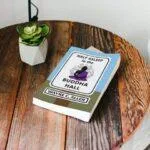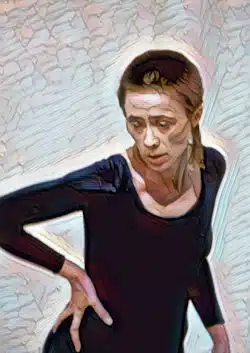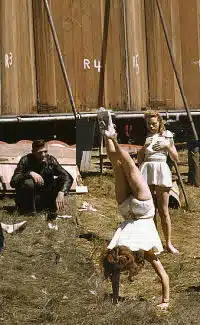On not being you — of course you’re you. But only in one sense. Mostly you’re a process living inside of what you call “you.”

Looking for more on this topic?
Check out my book,
Half Asleep in the Buddha Hall.
My “Eastern” book takes you by the hand and helps you to find peace of mind.
Half Asleep in the Buddha Hall is a Zen-based guide to living life fully and deeply.
Last week I gave you the following quote from a book
called “Bring Me the Rhinoceros”.
Happiness requires a certain surrender. Your unhappiness is threaded through your idea of you. Happiness would overturn some things you know about yourself. Happiness asks, “Are you willing to be a different you?” Or, “Are you willing to be not you?“
John Tarrant, Bring Me the Rhinoceros, pg. 147
I recognize that many of the themes that I present on the blog are in a sense rehashings of things I’ve written about before.
But that quote from last week, when I first read it, kind of stopped me in my tracks. It wasn’t just that it was a clever sentence — and it is — but that it frames the whole thing in a way I’ve never thought of before.
About Letting Go
My clients often used very specific language when addressing what they thought were their issues.They’d say,
- “I really need to let go of…” or
- “I really need to stop holding onto…”
And then, they’d give me a list of one or more things that they thought they needed to let go of.
They got the drift that there were certain things they were doing that caused their misery. It’s as if they thought that if only they could drop those specific behaviors they might just be happy.
Their experience, however, was that even when they managed to stop one or more of those behaviors, they really weren’t that much more happy or content.
Happiness, it seemed, was always a couple of steps ahead of them.
I recently mentioned about another quote I’d read, where the writer used the term, “cheerful melancholiac.”
I wrote that this perspective fit for me — that my tendency is to be a bit sad, and if I don’t watch myself, sad can turn into really sad, and things can rapidly go downhill from there.
I’ve noticed, over the last few years, that I’ve gotten over myself to a great extent, and don’t sink very far at all into this odd little pit.
It never occurred to me, however, that viewing myself as a cheerful melancholiac was just another choice.
It felt so real. Thus my surprise when I read the line, “… to be not you.”
I think, prior to that, I got it intellectually that what was going on in my head — my stories, my emotions, my delusions, and all the other nonsense up there — was no more substantial than bubbles atop a rushing stream.
They sure felt real — and when I was caught in the middle of all the drama, that was all I could see.
I think I now get it: this is just me doing what I normally do — making myself miserable.
While it’s a great improvement to simply let all of that be — to be sad when I’m sad, and not to beat up on myself over it — another, more interesting alternative, would be to really let go.
The way we all go off the rails is by thinking that certain aspects of our personality, emotional or physical condition, or the behaviors we engage in are somehow etched in stone.
Here’s the truth: The contents of my mind, much like the bubbles on water, are just the game my mind is playing. They’re not me.
Here’s a quote from the Dalai Lama:
The actual process by which mind creates our unenlightened existence and the suffering we experience is described by Candrakirti in his Guide to the Middle Way, where he states, “An undisciplined state of mind gives rise to delusions which propel an individual into negative action which then creates the negative environment in which the person lives.”
Unenlightened existence [samsara] is getting caught on the wheel of life. We think that what we see is real as opposed to something we make up in our heads.
Although it’s a lot to swallow, everything you see, hear, feel, think, all of this stuff, are simply things going on in your head. The things you see, for example, are nothing more than electrical impulses in your brain.

The real point, the essential point, is to fully understand that how you view the world is how you view the world.
The Dalai Lama has it in the correct order: we go up into our heads and tell ourselves stories, act upon the unsubstantiated stories, and then notice that the world we’ve created fits the stories we’ve created.
And then we say, “See! It’s just like I thought it was.”
Lame eh?
This is what each of us does, this is what each of us has been trained to do. This is me, being me. This is you being you.
Here’s a quote from Pema Chodron:
The process of becoming unstuck requires tremendous bravery, because basically we are completely changing our way of perceiving reality, like changing our DNA. We are undoing a pattern that is not just our pattern. It’s the human pattern: we project onto the world a zillion possibilities of attaining resolution. We can have whiter teeth, a weed-free lawn, a strife-free life, a world without embarrassment. We can live happily ever after. This pattern keeps us dissatisfied and causes us a lot of suffering.
It’s all in our training.
We all know that buying stuff makes us happy, because that’s what the marketers tell us. We all know that we can live happily ever after, because that’s what the movie makers tell us.
And yet, when we try to live this way, we find ourselves bumping our noses against our wants, our needs, and our dramas. We believe that happiness and contentment somehow lies outside of us, and we seek after it like Don Quixote tilted at windmills.
What we believe something is, and what something is,
is never the same thing.
Not only do you have to notice the games you play between your ears, but you have to actually do something about them.
I think I can pretty easily get you to watch what goes on in there — certainly we do that when we teach meditation or mindfulness. Doing something about it, or actually not doing something about it, is the tricky part.
Many people think that mindfulness equals calmness. What it actually equals is presence.
Presence means being with whatever is going on, with total awareness, and full permission.
Pema Chodron again:
For example, if somebody abandons us, we don’t want to be with that raw discomfort. Instead, we conjure up a familiar identity of ourselves as a hapless victim. Or maybe we avoid the rawness by acting out and righteously telling the person how messed up he or she is. We automatically want to cover over the pain in one way or another, identifying with victory or victimhood.
This would be being you. Being not you would mean simply sitting with the pain, watching the stories go by, and not attaching to any of it. The non-attachment part is a characteristic of the Middle Way.
Another quote:
When we can rest in the middle, we begin to have a nonthreatening relationship with loneliness, a relaxing and cooling loneliness that completely turns our usual fearful patterns upside down.
Cool loneliness allows us to look honestly and without aggression at our own minds. We can gradually drop our ideas of who we think we ought to be, or who we think we want to be, or who we think other people think we want to be or ought to be. We give it up and just look directly with compassion and humor at who we are. Then loneliness is no threat and heartache, no punishment.

The Middle Way– the world turned upside down
The Middle Way is the balanced perspective. This is how we develop our core. Our self identity expands and loosens. We let go of identifying, not only with what does not work, but also with what does. We are not any of it.
If, for example, I identify with my 30-year-old solid and healthy body, I’m in deep trouble in my 70s.
If I think what happened to me in the past dictates how I am right now, I’m stuck.
If I think what I imagine ought to happen is anything more than the story I’m telling myself, I open myself to disappointment and heartache.
If I watch myself, and watch others, in an openhearted, caring, and detached way, then what is, is what is, I am who I am, and what’s going on becomes a moment in time, as opposed to a life sentence.
Last quote, From Taizan Maezumi Roshi:
I am not devaluing thought. I am just mentioning that we shouldn’t mix up the fact of our life with our thoughts about our life. What we think and what actually is–that’s what Buddha talks about as constant change. Anything and everything, constantly changing. That’s the real life, which is, in a way, unknowable. And that unknowable, impersonal no-self–unfixed by any kind of values, attachments, detachments–works perfectly. Knowing nothing, it works completely. That is what this life is. That is what is expressed as no-self. When you don’t see this, suffering is waiting for you. When you see it, there is Nirvana, or peace.

